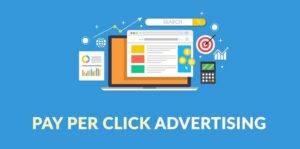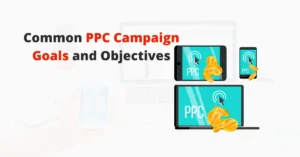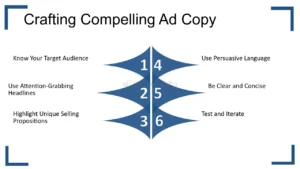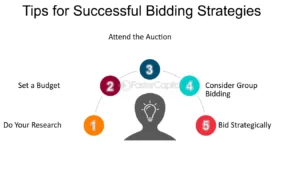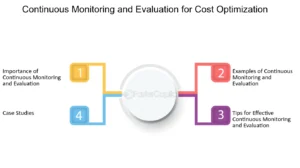Mastering Pay-Per-Click Advertising: A Comprehensive Guide to Building Successful Campaigns
Introduction:
In the dynamic and ever-evolving realm of digital marketing, Pay-Per-Click (PPC) advertising stands as a cornerstone strategy for businesses aiming to thrive in the competitive online landscape. As technology advances and consumer behavior evolves, mastering PPC advertising requires a nuanced understanding of the underlying principles, coupled with strategic thinking and continuous optimization. This comprehensive guide serves as a roadmap for marketers embarking on their journey towards PPC mastery, offering an exhaustive exploration of essential concepts, advanced strategies, and best practices.
Chapter 1: Understanding Pay-Per-Click Advertising
PPC advertising is a form of online marketing in which advertisers pay a fee each time their ad is clicked. Unlike traditional advertising models, PPC offers a highly targeted approach, allowing advertisers to reach potential customers based on search queries, demographics, and interests. Platforms such as Google Ads, Bing Ads, and social media channels provide the infrastructure for running PPC campaigns, enabling advertisers to bid on keywords and display ads to relevant audiences.
In this chapter, we delve into the evolution of PPC advertising, tracing its origins from the early days of search engine marketing to its present-day prominence in digital marketing strategies. We explore the core principles of PPC advertising, including ad relevance, quality score, and ad rank, shedding light on the factors that determine ad placement and performance. By understanding the mechanics of PPC platforms and auction dynamics, marketers gain insights into crafting effective PPC campaigns that drive targeted traffic and maximize return on investment.
Chapter 2: Setting Objectives and Goals
Every successful PPC campaign begins with a clear set of objectives and goals. Whether the goal is to increase website traffic, generate leads, or drive online sales, defining specific and measurable objectives is crucial for guiding campaign strategy and evaluating performance. In this chapter, we delve into the process of setting SMART goals—goals that are Specific, Measurable, Achievable, Relevant, and Time-bound—aligned with broader business objectives.
We explore the importance of establishing key performance indicators (KPIs) to track progress and measure success, covering metrics such as click-through rate (CTR), conversion rate, cost per acquisition (CPA), and return on ad spend (ROAS). By aligning PPC goals with overarching business objectives, marketers can ensure that their campaigns contribute to the bottom line and deliver tangible results.
Chapter 3: Conducting Comprehensive Keyword Research
Keyword research is the foundation of any successful PPC campaign, informing ad targeting, ad copy, and bidding strategies. In this chapter, we delve into the intricacies of keyword research, exploring advanced techniques and tools for uncovering high-intent keywords with optimal search volume and competition levels. We discuss the importance of understanding user intent and tailoring keyword selection to align with the buyer’s journey, from awareness to purchase.
We explore keyword research tools such as Google Keyword Planner, SEMrush, and Ahrefs, providing insights into keyword discovery, analysis, and segmentation. By conducting thorough keyword research and competitor analysis, marketers can identify lucrative opportunities, optimize ad targeting, and increase the relevance of their ad campaigns.
Chapter 4: Crafting Compelling Ad Copy
Effective ad copy is essential for capturing audience attention, driving engagement, and enticing clicks. In this chapter, we delve into the art and science of crafting compelling ad copy, exploring proven techniques for writing persuasive headlines, descriptions, and calls-to-action. We discuss the importance of relevance, clarity, and value proposition in ad copywriting, highlighting best practices for aligning ad messaging with user intent and expectations.
We explore the concept of A/B testing and ad copy optimization, emphasizing the importance of iterative experimentation and data-driven decision-making. By testing different ad variations and analyzing performance metrics, marketers can refine their ad copywriting techniques, improve click-through rates, and enhance overall campaign performance.
Chapter 5: Designing Conversion-Optimized Landing Pages
A seamless transition from ad click to conversion hinges on the design and functionality of landing pages. In this chapter, we explore best practices for designing conversion-optimized landing pages, emphasizing the importance of relevance, clarity, and persuasive elements. We discuss the key components of a high-converting landing page, including compelling headlines, persuasive copy, clear calls-to-action, and user-friendly design.
We delve into the principles of landing page optimization, covering topics such as A/B testing, multivariate testing, and heat mapping analysis. By optimizing landing page elements based on user behavior and feedback, marketers can improve conversion rates, reduce bounce rates, and maximize the return on investment from their PPC campaigns.
Chapter 6: Budgeting and Bidding Strategies
Strategic budget allocation and bidding tactics are crucial for optimizing PPC campaign performance and maximizing return on investment (ROI). In this chapter, we delve into the intricacies of budgeting and bidding strategies, exploring manual and automated bidding approaches, bid modifiers, and budget optimization techniques. We discuss the concept of ad rank and its impact on ad placement and cost-per-click (CPC), highlighting strategies for improving ad position while minimizing costs.
We explore advanced bidding strategies such as target ROAS (return on ad spend), target CPA (cost per acquisition), and enhanced CPC (ECPC), providing insights into when and how to use each approach. By adopting data-driven bidding strategies and monitoring campaign performance closely, marketers can achieve cost-efficient results and drive scalable growth.
Chapter 7: Targeting the Right Audience
Effective audience targeting lies at the heart of successful PPC campaigns, enabling marketers to reach and engage with their ideal customers. In this chapter, we explore advanced audience targeting features, including demographic, geographic, and behavioral targeting options. We discuss the importance of audience segmentation and persona development, enabling marketers to tailor ad messaging and offers to resonate with specific audience segments.
We delve into the concept of remarketing and audience exclusions, allowing marketers to re-engage with past visitors and exclude irrelevant audiences from their targeting criteria. By leveraging audience insights and segmentation, marketers can optimize ad relevance, improve engagement rates, and drive higher conversion rates from their PPC campaigns.
Chapter 8: Leveraging Ad Extensions and Enhancements
Ad extensions offer additional real estate and functionality to PPC ads, enhancing visibility and engagement. In this chapter, we explore the diverse range of ad extensions available across PPC platforms, including sitelinks, call extensions, location extensions, and structured snippets. We discuss the benefits of using ad extensions, such as improved ad visibility, increased click-through rates, and enhanced user experience.
We provide insights into best practices for implementing ad extensions, including relevance, consistency, and placement considerations. By strategically incorporating ad extensions into their campaigns and monitoring their performance closely, marketers can amplify the effectiveness of their ads, drive incremental clicks and conversions, and improve overall campaign ROI.
Chapter 9: Continuous Monitoring and Optimization
PPC success is contingent upon continuous monitoring, analysis, and optimization. In this chapter, we explore key metrics and performance indicators essential for evaluating campaign effectiveness and identifying optimization opportunities. We discuss the importance of monitoring metrics such as impression share, ad position, and quality score, providing insights into their impact on campaign performance and ROI.
We delve into the concept of A/B testing and iterative optimization, enabling marketers to experiment with different ad elements and strategies to identify winning variations. By leveraging advanced analytics tools and optimization techniques, marketers can refine their PPC strategies, minimize wasteful spending, and maximize the impact of their ad campaigns over time.
Chapter 10: Scaling Your PPC Efforts
As PPC campaigns mature and demonstrate success, the natural progression involves scaling efforts to reach a broader audience and drive sustained growth. Scaling requires a strategic approach that balances expansion with optimization to maintain efficiency and maximize return on investment. In this chapter, we explore advanced scaling tactics and strategies for accelerating the growth of PPC campaigns.
1. Audience Expansion:
• Lookalike Audiences:
Building upon the success of existing campaigns, marketers can leverage lookalike audiences to reach new prospects who share similar characteristics with their current customers. Platforms like Facebook Ads and Google Ads offer robust audience targeting options to create lookalike audiences based on various parameters such as demographics, interests, and behaviors.
• Expanded Targeting Options:
Beyond traditional keyword and demographic targeting, consider expanding targeting options to include interests, behaviors, and affinity audiences. By casting a wider net and exploring new audience segments, marketers can tap into untapped markets and discover new opportunities for growth.
2. Geographic Expansion:
• Regional Targeting:
Expand campaign reach by targeting additional geographic regions or markets where there is potential demand for your products or services. Utilize geo-targeting features to tailor ad messaging and offers based on the specific needs and preferences of different regions.
• International Expansion:
For businesses looking to expand globally, consider launching targeted campaigns in international markets. Conduct market research to understand cultural nuances, language preferences, and competitive landscapes to ensure effective localization of ad campaigns.
3. Multichannel Integration:
• Omni-channel Marketing:
Integrate PPC efforts with other digital marketing channels such as email marketing, social media marketing, and content marketing to create a cohesive and integrated marketing strategy. By leveraging multiple channels, marketers can reinforce brand messaging, increase touchpoints with prospects, and drive cross-channel engagement.
• Cross-Channel Remarketing:
Implement cross-channel remarketing strategies to re-engage with users across different platforms and devices. For example, retarget website visitors with display ads on social media platforms or email subscribers with personalized offers via email marketing campaigns.
4. Experimentation and Innovation:
• Test New Ad Formats:
Stay ahead of the curve by experimenting with emerging ad formats and features offered by PPC platforms. For instance, explore video ads, interactive ads, and shoppable ads to captivate audiences and drive engagement.
• Explore New Platforms:
Don’t limit PPC efforts to a single platform. Consider testing campaigns on alternative platforms such as LinkedIn Ads, Twitter Ads, or emerging ad networks to diversify reach and tap into niche audiences.
5. Performance Optimization:
• Scalable Infrastructure:
Ensure that your PPC campaigns are built on a scalable infrastructure capable of handling increased traffic and conversions. Optimize landing pages, website performance, and server capacity to accommodate growth without sacrificing user experience.
• Automated Optimization:
Leverage automation tools and algorithms to streamline campaign management and optimization processes. Implement automated bidding strategies, ad scheduling, and ad rotation to improve efficiency and scalability while minimizing manual workload.
6. Performance Monitoring and Analysis:
• Data-Driven Decision Making:
Continuously monitor campaign performance and analyze key metrics to identify trends, patterns, and areas for improvement. Utilize advanced analytics tools and dashboards to gain actionable insights and make data-driven decisions.
• Iterative Optimization:
Implement a culture of continuous improvement by iteratively optimizing campaign elements based on performance data. Test new ad creatives, targeting options, and bidding strategies to refine tactics and maximize ROI over time.
7. Budget Allocation and Forecasting:
• Incremental Budget Increases:
Gradually increase campaign budgets based on performance metrics and projected returns. Monitor cost-per-acquisition (CPA) and return on ad spend (ROAS) to ensure that budget increases are justified by incremental revenue.
• Forecasting and Predictive Analytics:
Leverage forecasting tools and predictive analytics to estimate future campaign performance and allocate budgets accordingly. Anticipate seasonal trends, market fluctuations, and competitive dynamics to optimize budget allocation and maximize campaign effectiveness.
Conclusion:
Scaling PPC efforts requires a strategic blend of expansion, optimization, and innovation. By adopting a data-driven approach, leveraging advanced targeting options, and embracing emerging technologies, marketers can unlock new avenues for growth and elevate their PPC campaigns to new heights of success. Whether expanding into new markets, integrating with other channels, or experimenting with new ad formats, the key to effective scaling lies in agility, adaptability, and a relentless focus on delivering value to the target audience. Embrace experimentation, stay ahead of the curve, and continually refine your approach to unlock the full potential of PPC advertising in driving sustainable growth for your business.

